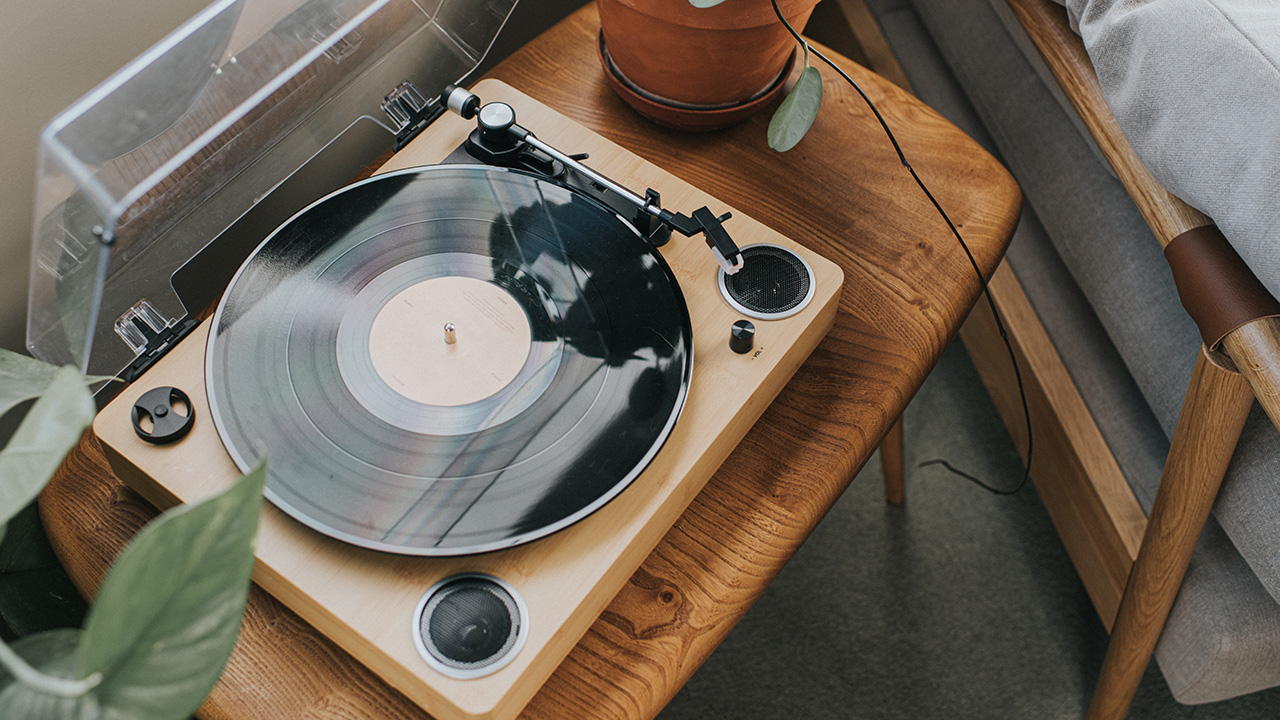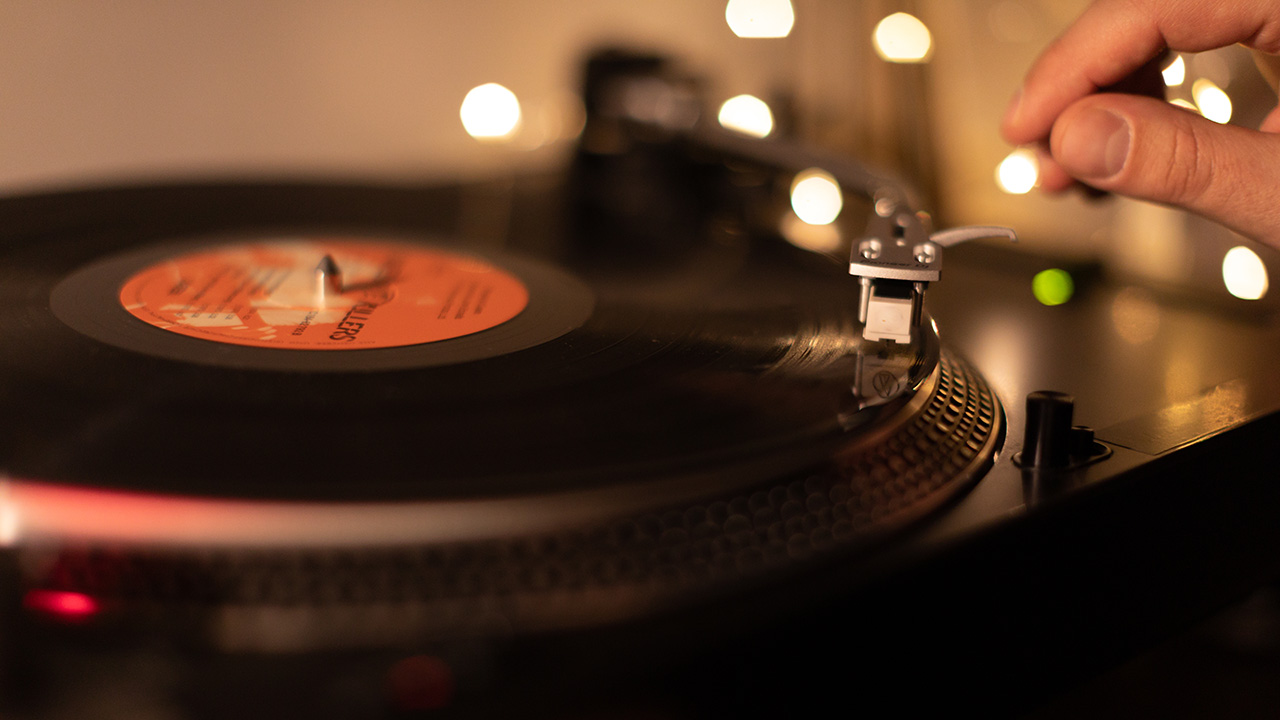Direct-drive vs belt-drive turntables: What's the difference?
Get the inside track on whether a belt-drive or direct-drive turntable is right for you

As with any hi-fi purchase, which record player to go for will depend an awful lot on what you are trying to achieve and also how much cash is currently burning a hole in your pocket. When it comes to the question of the relative qualities of direct-drive and belt-drive machines, though, it’s handy to remember the first part of that equation: this isn’t a battle between the two or an either/or. Direct-drive will suit the needs of some people, while others will find everything they need in a belt-drive turntable.
Direct-drive vs belt-drive: The differences
In the simplest terms possible, the difference between a belt-drive and a direct-drive machine can be derived from their respective names. A belt-drive has a platter that sits on a bearing and is driven by a pulley-style belt, usually made of rubber. A direct-drive turntable, on the other hand, will skip the belt bit and feature a platter connected to the motor directly through the spindle at the heart of the plate.
The division between the two might be best defined by the fact that a belt-drive turntable is happiest at home, spinning the hits for you and your nearest and dearest, while a direct-drive is down to get out there and help DJs reduce a room to a sweaty mass of bodies. The reason for these different applications is the manner in which the two deliver the goods.
How do the two drive types impact the sound?
Pioneered by engineer Shuichi Obata, who worked for Matsushita-Technics, in the late 1960s, direct-drive decks quickly helped to change the way music is made and consumed. The first electronic direct-drive turntable was called the SP10, and it landed in 1969. One of its successors, the SL-1200, became a hip hop cornerstone after its arrival three years later. The reason? Torque, and plenty of it.
Direct-drive turntables are able to get up to speed in a hurry and DJs are able to accurately stop songs, toy with speed, maintain pitch, and switch between decks while playing.
“They also tend to be superior when it comes to maintaining a constant speed, virtually eliminating wow and flutter – audible pitch variations that occur because the record is being rotated at an inconstant rate,” wrote the Institute of Electrical and Electronics Engineers’ Brian Santo in Spectrum. “By the early 1970s, radio disc jockeys, club DJs, and recording engineers had started adopting direct-drives.”
By way of contrast, belt-drives skirt some of the problems caused by vibrations from the motor (which can produce distortion) thanks to the belt itself, which serves as a shock absorber of sorts and prevents any sort of funny business when it comes to the sound. The other side of that coin is that speeds can fluctuate more due to any issues with the tautness of the belt or its alignment, but a weighty platter and an isolated motor are handy weapons in the battle against slippage.
Which one is easier to set up and maintain?

These days a lot of thought goes into producing belt-drive turntables that are robust and precise. Manufacturers are naturally aware of the negative effects of a belt that’s not properly sized or aligned, or a bearing that’s out of sync, and they factor that into new products, meaning that belt-drive decks remain a very popular choice for home use because of their simple, effective controls. Over time (years not weeks or months) the belt may wear out, but they’re easy to source and replace.
One of the main pros with a direct-drive turntable is that concerns such as this aren’t relevant. The whole idea is that you can start it up quickly and efficiently, enjoying consistent, accurate tracking and performance without worrying about wearing things out. Companies are working on the distortion thing, too, particularly on more high-end models. Which brings us to…
Does one cost more than the other?
There are affordable models in both categories, and exceptional ones at that. Hitting the heights without scaring your wallet into hiding is a little more difficult on the direct-drive side, but not impossible. The Pro-Ject Debut Carbon EVO retails for below £500, with something like the well-regarded Technics SL-1500C coming in at around £899. Rega’s beautiful entry-level Planar 1 belt-driven model, which sits beneath the £300 barrier, is a compelling argument on the other side for those starting out.
If money is no object, then you can really get into specifics and fine-tune your setup. The direct-drive Technics SL-1000R, a headline-grabbing machine from a resurgent company, will set you back around £14,000 for example, while the Rega Planar 10 / Apheta 3, at around £4500, has a belt with several years’ research devoted solely to its contribution to the whole.
You can keep going until you get a nosebleed around the £23,000 mark, where you’ll find old stagers such as the belt-driven Linn Klimax LP12 reinventing itself over and over again. The key element is to know what you want to achieve and set out to maximise bang for your buck with that knowledge in your back pocket. Start with what sort of sound you want to experience and go from there. Enjoy the ride.
Related buyer’s guides
You can trust Louder
- The best Bluetooth turntables: Our top picks
- The best record players: Great turntables for your vinyl
- The best budget turntables: Spin your sounds for less
- Best portable record players: Portable turntables for small spaces
The latest news, features and interviews direct to your inbox, from the global home of alternative music.
Huw Baines is a freelance music writer with a particular interest in all things punk, hardcore and vinyl. Alongside Louder, he has written for Long Live Vinyl magazine, the Guardian, Kerrang!, Huck, Guitar Magazine, Vice, Clash, and elsewhere.

